The Power of Web Shells
[Warning: this diary contains many pictures and may take some time to load on slow links]
Web shells are not new in the threats landscape. A web shell is a script (written in PHP, ASL, Perl, ... - depending on the available environment) that can be uploaded to a web server to enable remote administration. If web shells are usually installed for good purposes, many of them are installed on compromised servers. Once in place, the web shell will allow a complete takeover of the victim's server but it can also be used to pivot and attack internal systems.
In a recent investigation, I found on a shared platform a compromised website that was delivering phishing pages. I was able to get access to the archive containing the phishing kit but also a web shell. It was also installed on the server and the location was easy to guess. The web shell is presenting itself as "RC-SHELL" and is not a brand new one (I found reference to it in 2013) but it has a very low detection rate in VT (4/55) and was uploaded for the first time a few hours before me. Maybe it has been improved or updated?
Modern web shells are very powerful and offer plenty of features to the attacker. Because some pictures are worth a thousand words, I decided to make a tour of the interface to give you more details about modern web shells and to show their power. This web shell is written in PHP and, as usual, access to the web interface is restricted via hardcoded credentials. The login / password hashes are in the source code. A quick search in rainbow tables returned "test" for the login and password!? This time, it was even easier: the access was open (the authentication was disabled in the code). Note that the source code also contained the e-mail address of the owner.
When you access the URL, here is the default screen:

On top of the screen, you can see details about the host and basic PHP settings like the "safe-mode" status, available databases support. Then, the single-line menu to access all the features. Let's review them.
The menu "Files" gives access to a file manager that can be used to browse the local file system (with the web user UID restrictions) and perform actions on files (copy, delete, rename, move, etc):
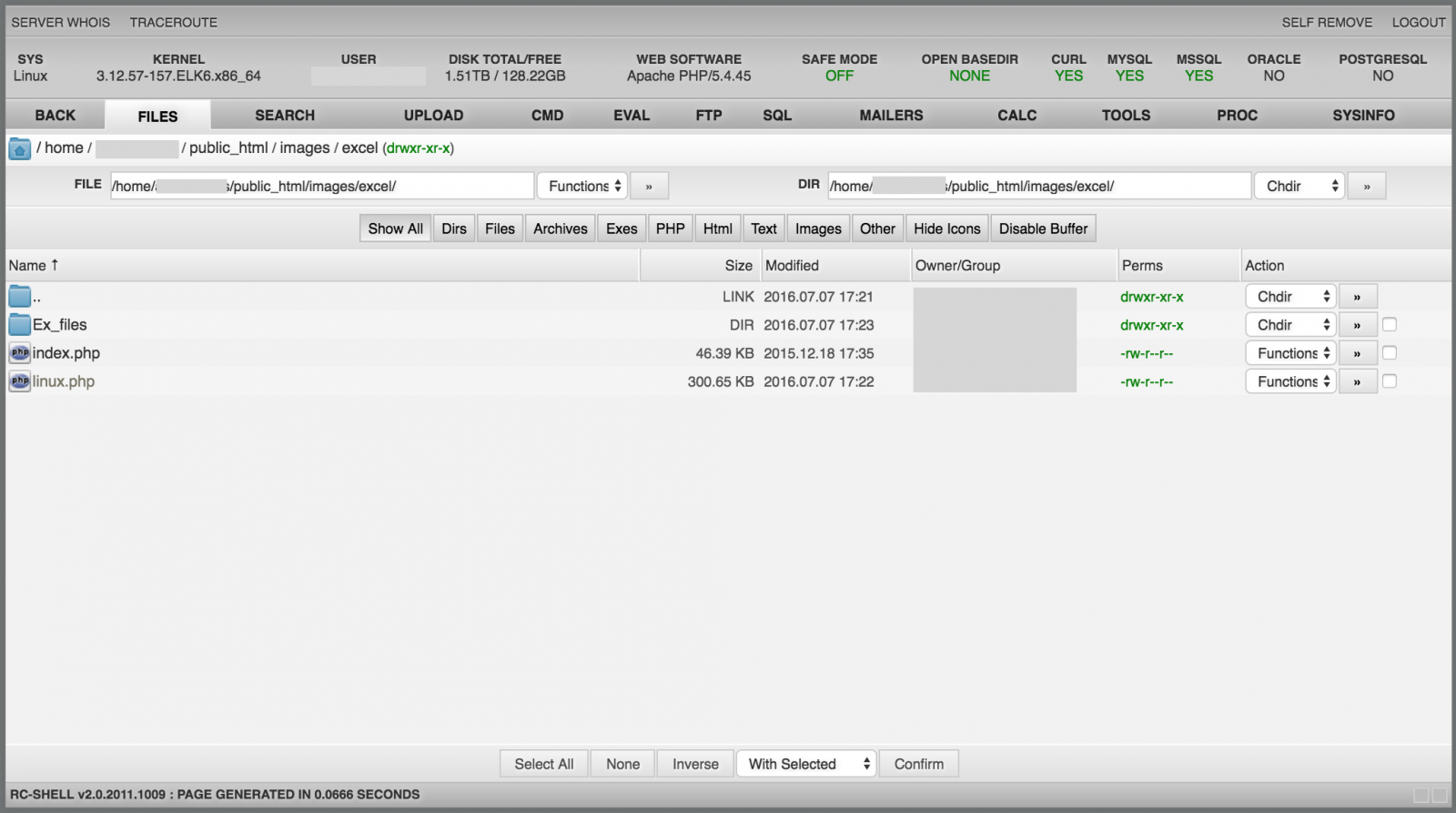
The menu "Search" performs file search operations (think about the "find" Linux command) but you can also search for specific contain inside files (like "grep"):
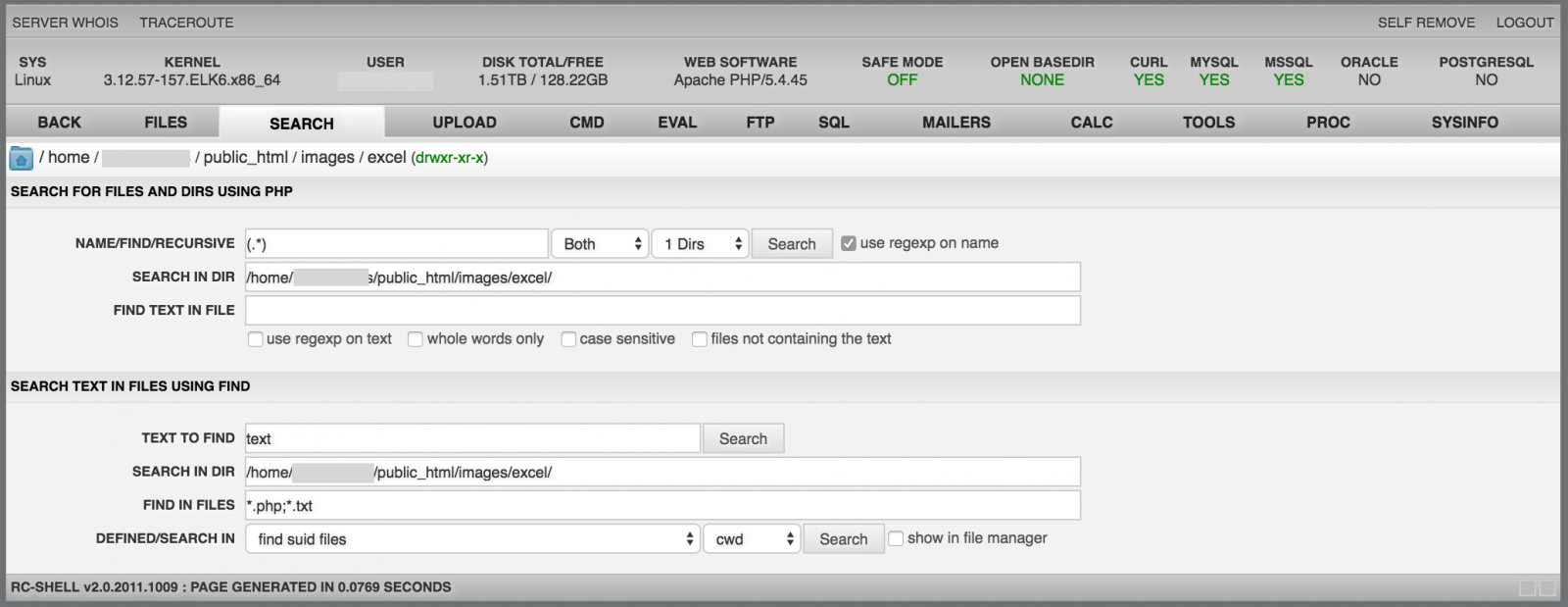
The "Upload" menu transfers files on the local file system. Files can be uploaded from the local drive (on the attacker's computer) or fetched from a remote location (using common protocols like HTTP, FTP):
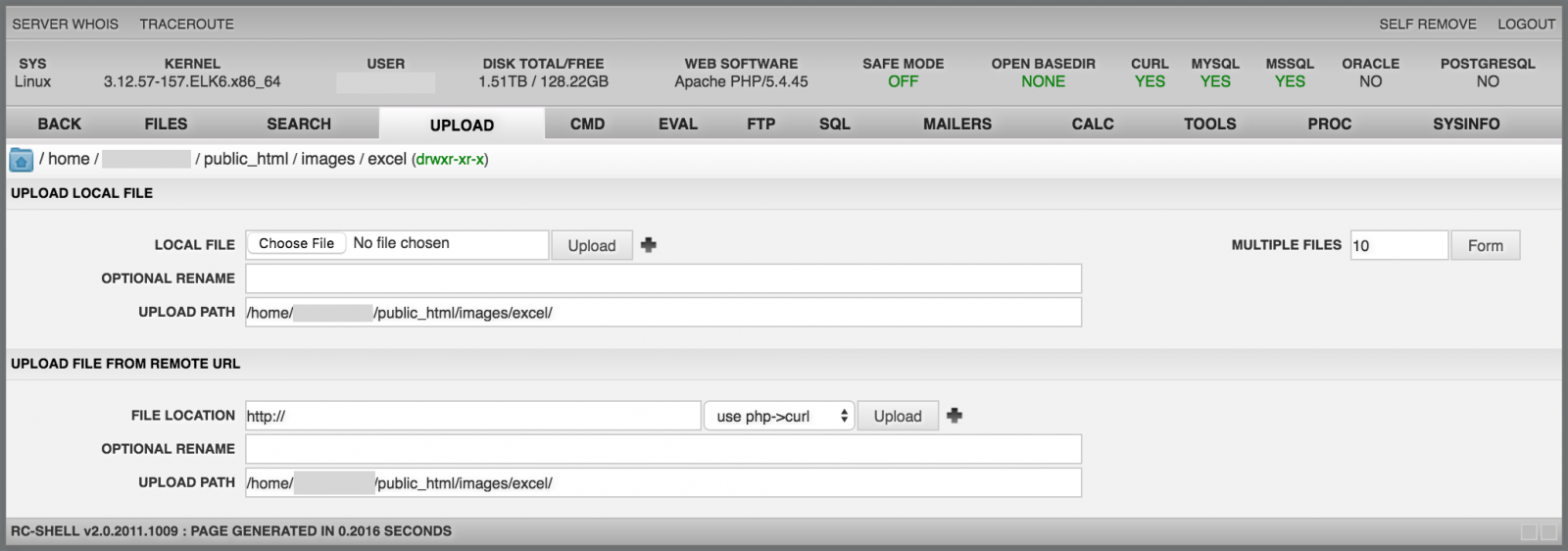
The "Cmd" menu executes shell commands on the target (this is really the core feature of a web shell). Commands are executed (with the web server UID rights) and output is returned in the browser:
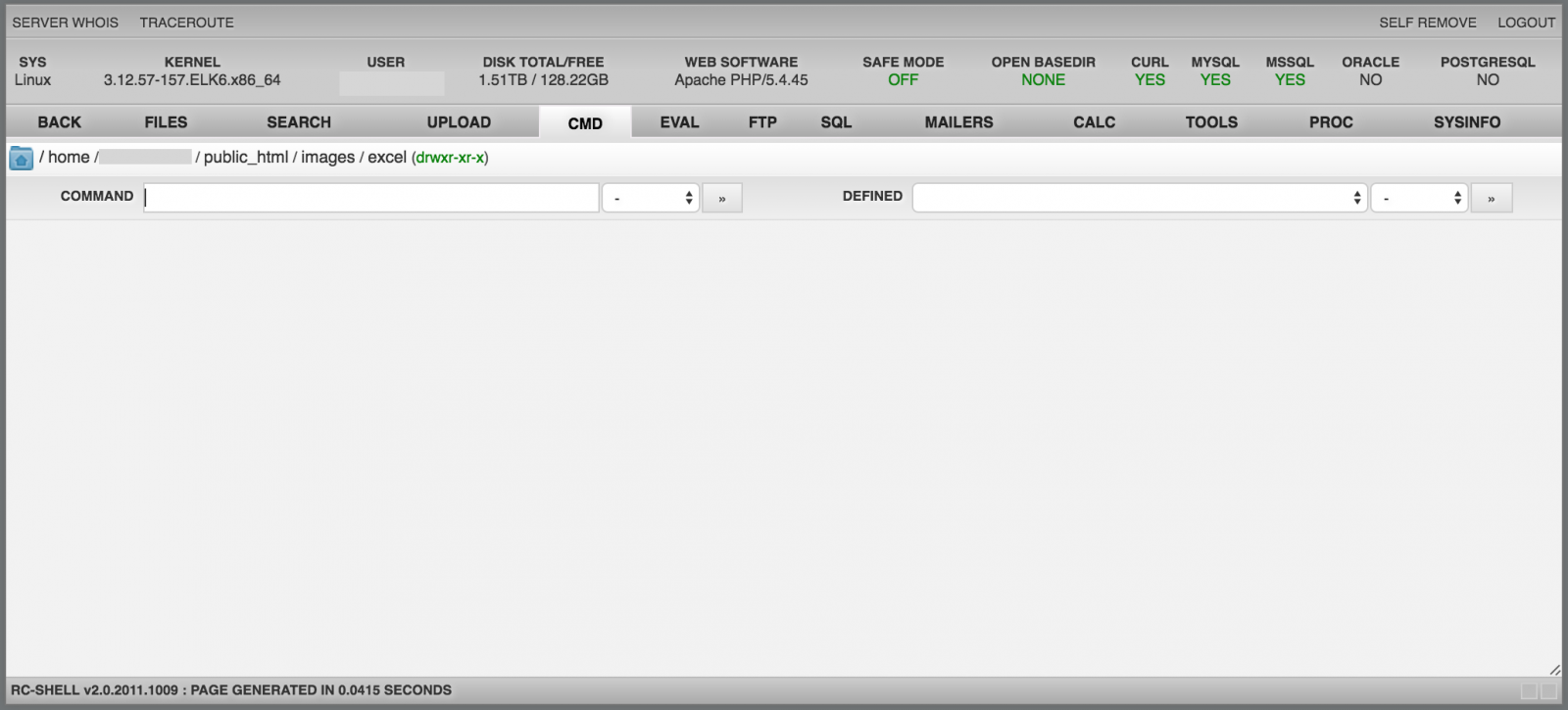
The "Eval" menu offers the same features as "Cmd" but executes native PHP code. This is a "PHP Shell":

The "FTP" menu gives access to a powerful FTP client like WinSCP or any other graphical tool:
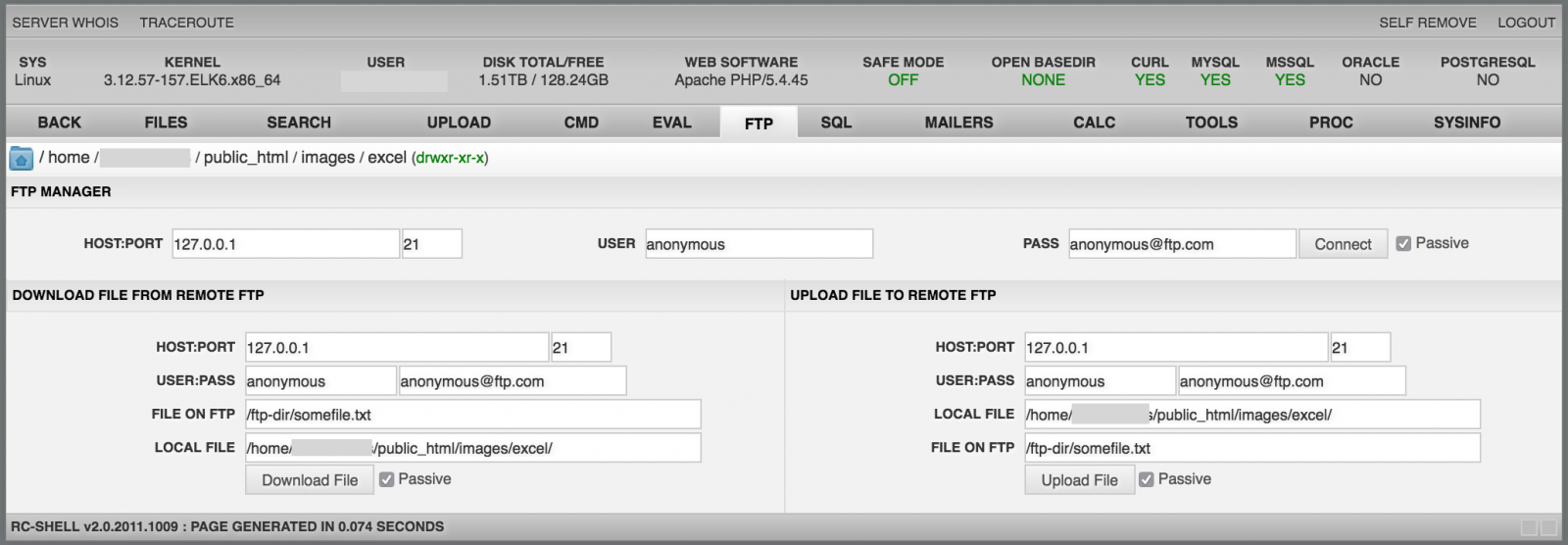
The "SQL" menu provides tools like PHPMysqlAdmin. It allows to interact with SQL servers:
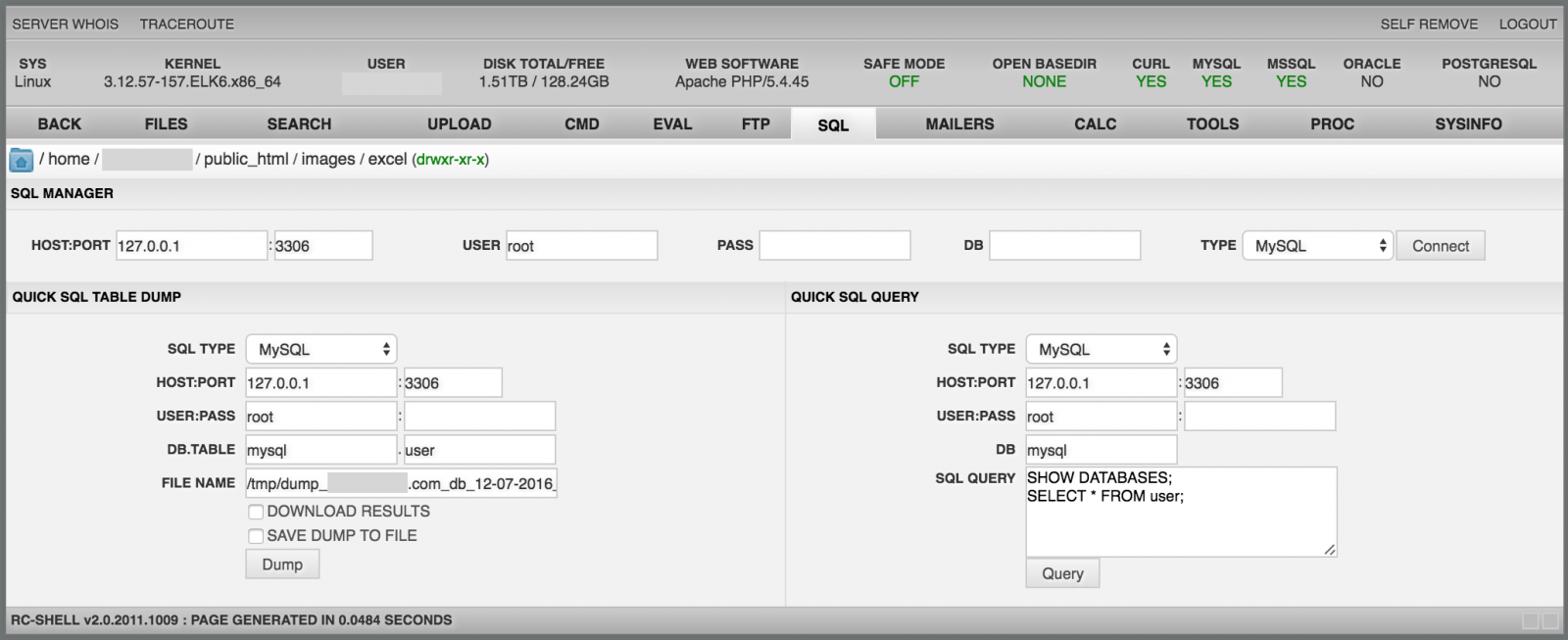
The "Mailers" menu, as the name suggests, is a tool to send spam. Simple emails can be send but also campaigns based on a CSV file:
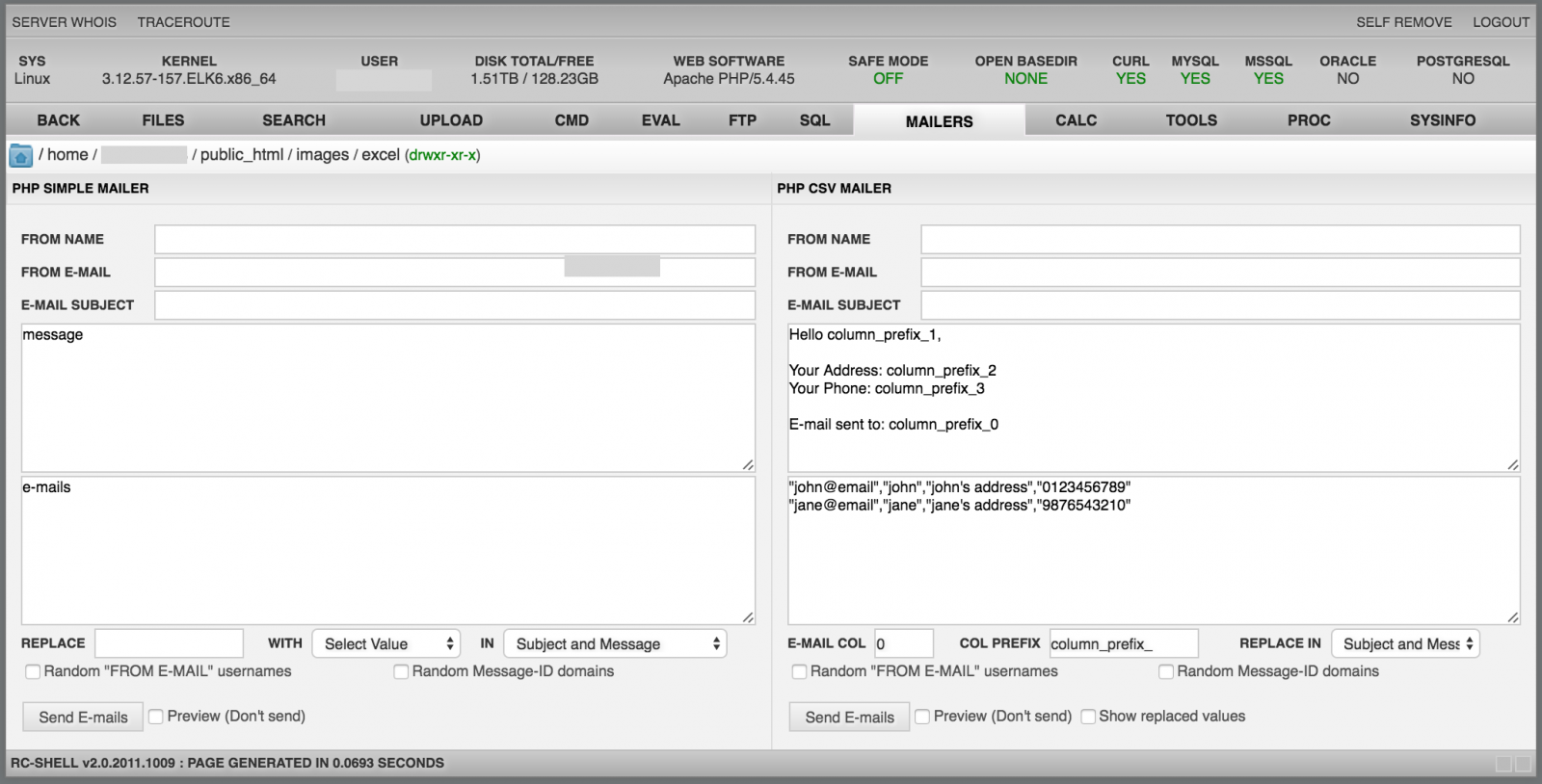
The "Calc" menu is a toolbox which provides tools like hash calculators, encoders, converters:

The "Tools" menu is my preferred one. It offers many tools to pivot internally and attack other resources: brute-force, code injection, shell binder, port-scanner, etc:
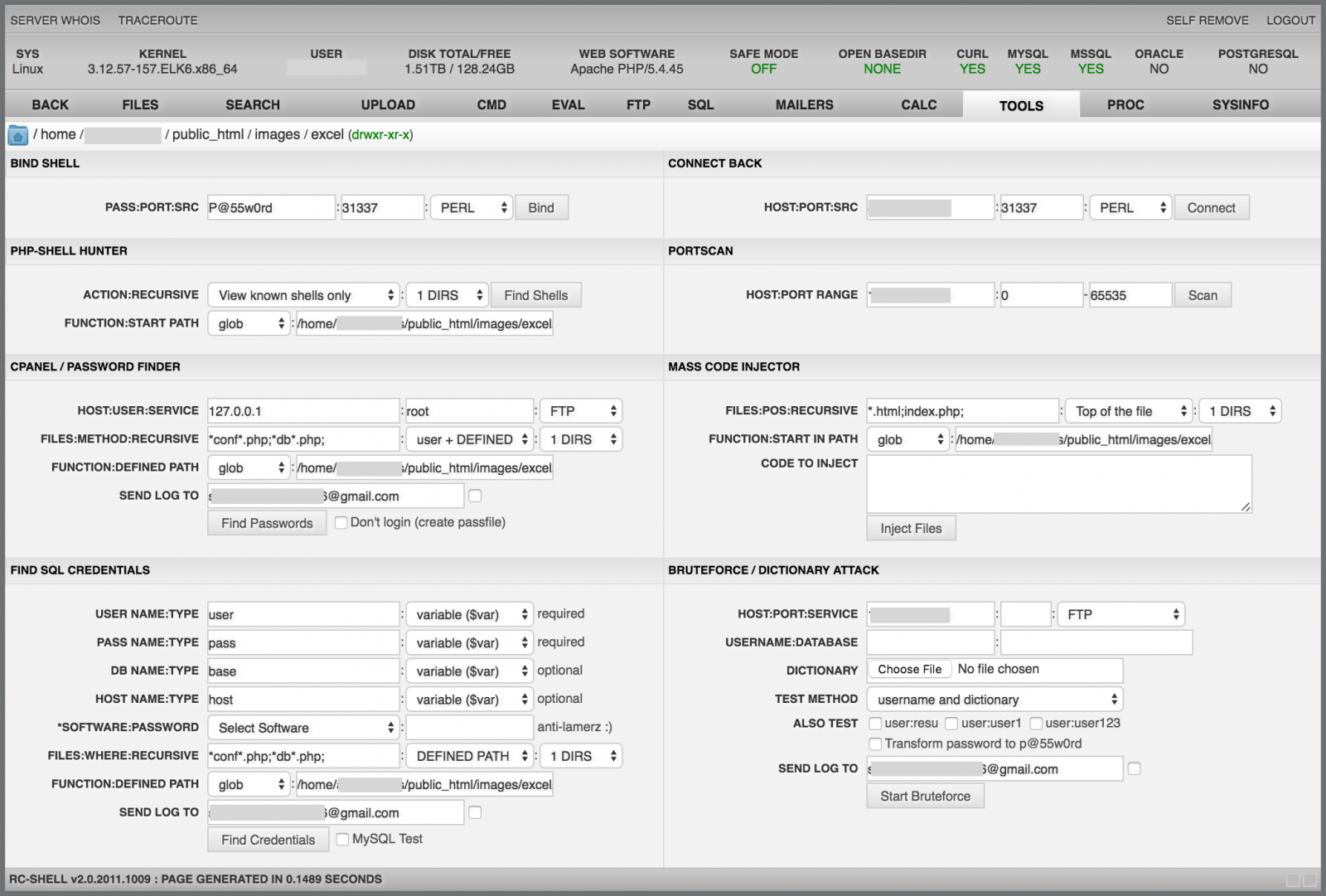
Finally, the two last menus are used to manage processes on the box (à la "top") and to display system information about the host (CPU, memory, file systems, ...):

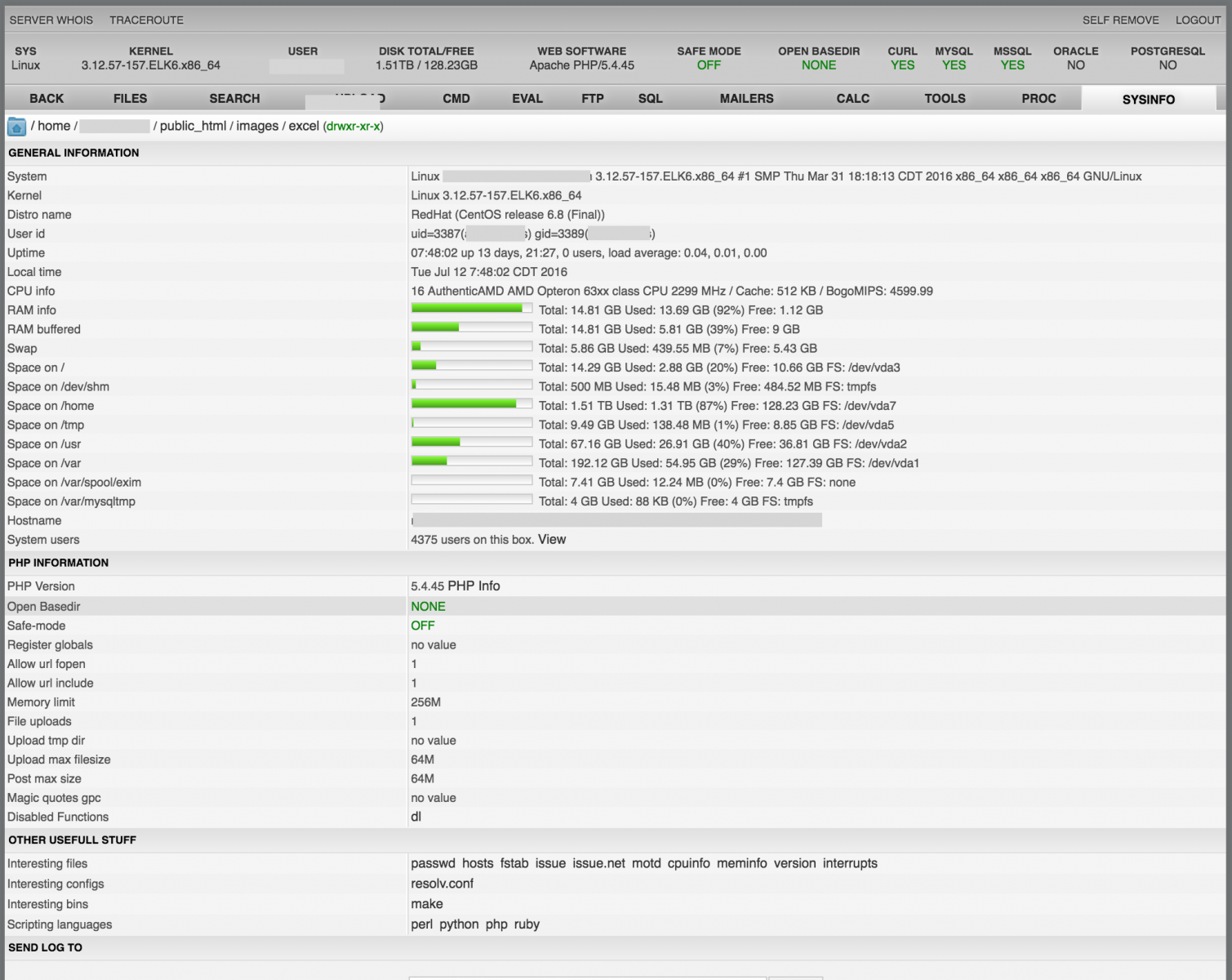
As you can see a modern web shell is a powerful tool. Keep in mind that a web shell will be executed with the rights and permissions of the web server (ex: "www-data" on a Linux system). To reduce the risks, apply best practices like:
- Run the web server in a restricted environment (a VM, a Docker container, a chroot() jail).
- Do NOT allow access to privileged access via commands like sudo.
- Do NOT give full DBA access to your database, restrict access to required database/tables and allow required SQL commands only.
- Implement egress filters and restrict communications with the outside world.
- Protect your web server directories against write operations
Do not hesitate to share your stories about web shells. Did you find one, how, where?
Xavier Mertens (@xme)
ISC Handler - Freelance Security Consultant
PGP Key
Drupal: Patch released today to fix a highly critical RCE in contributed modules
Drupal announced that they will release today (Wed July 13th 2016 16:00 UTC) a patch that will fix highly critical remote code execution vulnerabilities in contributed modules. Drupal core is not affected.
The vulnerability is a "PHP Arbitrary Code Execution" and is rated up to 22/25 (based on risk calculation model used by Drupal - details here). The vulnerable modules are used on between 1.000 and 10.000 instances.
If you maintain one or more Drupal websites, review the list of affected contributed modules and apply the patch as soon as possible if you're affected.
Link to the advisory ID: DRUPAL-PSA-2016-001
Xavier Mertens (@xme)
ISC Handler - Freelance Security Consultant
PGP Key


Comments